Australia Day filled the media this week. Indigenous protests on ‘Invasion Day’ have now convinced a majority of young people that the date should be changed. Counterintuitively, Indigenous man Wesley Enoch argues that it should be retained because its controversy is helping us understand our history.
The date commemorates the landing of the First Fleet (of convicts and corrupt cops) in Sydney Cove in 1788. Just as Christmas co-opted the pagan festival of the winter solstice, its timing fortuitously falls at the end of summer holidays for school children and workers. Until 1994 the actual day wasn’t respected, rather it was appended to a ‘long weekend’.
Misnamed, it has nothing to do with the founding of Australia, which took place 113 years later. There is no physical place to focus on Australia Day, unlike churches for Christmas and Easter or War Memorials for Anzac Day. The original site is unrecognisable as it was built over several times, but curiously Sydney Cove was once re-created, and opened on, you guessed it, Australia Day.
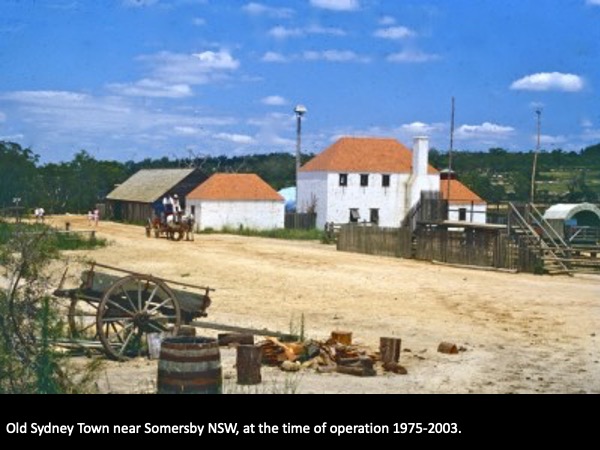
Old Sydney Town (OST), a recreation of Sydney in 1803, was a tourist attraction created at Somersby, 80 kilometres north of the original site. In the early 1970s, Architect Frank Fox wanted to create exact replicas of the buildings of that time on land of similar topography with an artificial lake to represent the harbour. His genius was to employ Robert Irving, an outstanding architectural historian, and moreover a brilliant teacher and intellectual entrepreneur.
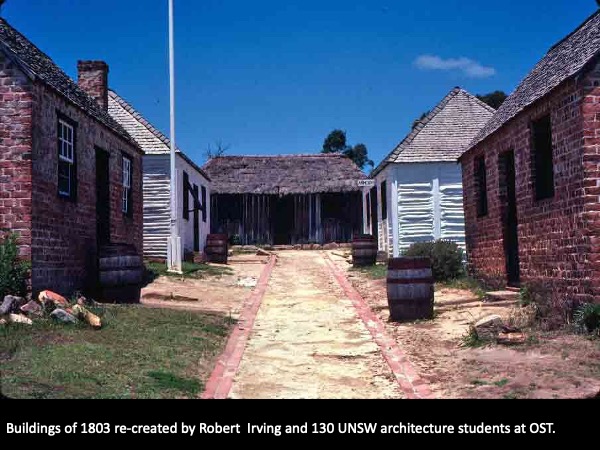
Irving put together a team of four to research the layout, designs, exact details and materials from limited historical documents. He was also a teacher in the architecture school at UNSW and he co-opted the entire first year to research thirteen buildings, in groups of ten, to understand a building so thoroughly, (know its form, learn the construction techniques, schedule the materials) that they could build each one.
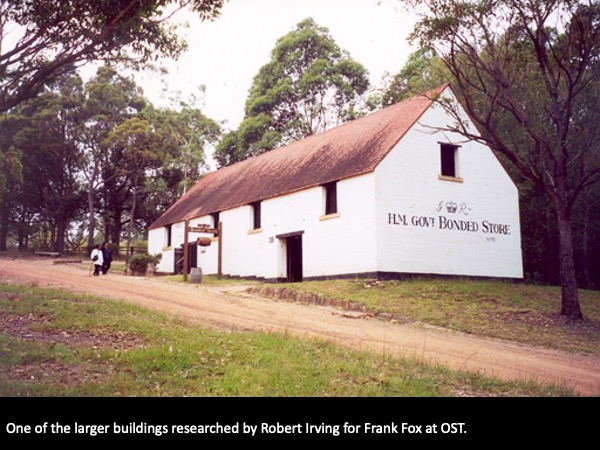
Researchers undertook the building during a two-week camp on site. They built in the materials of recreated ‘sandstock’ bricks, timber to replicate the Cabbage Palms (decimated in the original building to leave only remnants at ‘Palm Beach’), timber shingles, framing and ‘wattle and daub’ - essentially mud plaster on thin battens. They substantially completed all thirteen buildings, with tradesmen only coming in later to add the final touches.
It was a tradition that endured at UNSW; in later years students built ‘Timber Town’ at Wauchope, and the Solarch research buildings at Little Bay and Fowler’s Gap, 112 kilometres north of Broken Hill. Although the goal and church were never completed, and the windmill never opened at OST, other buildings were added to the ‘instant town’ creating several streets, making a good facsimile of the physical town.
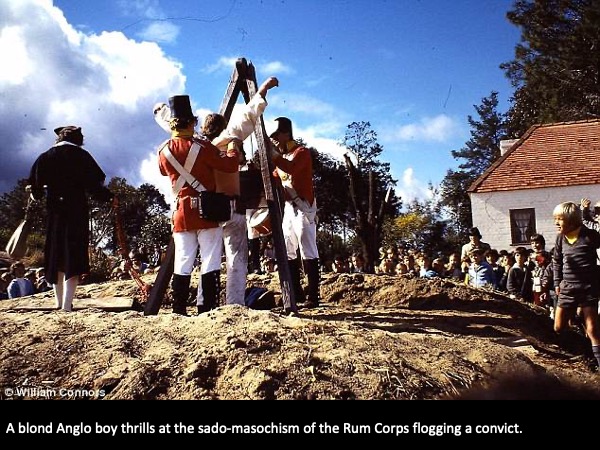
Fox then forged the tourist attraction by populating OST with townspeople and the ‘Rum Corps’ in period costume and re-enactments of ‘criminals’ in stocks, recalcitrant convicts being whipped, and soldiers firing their muskets. Having been partly federally funded, OST was officially opened on Australia Day 1975 by PM Gough Whitlam.
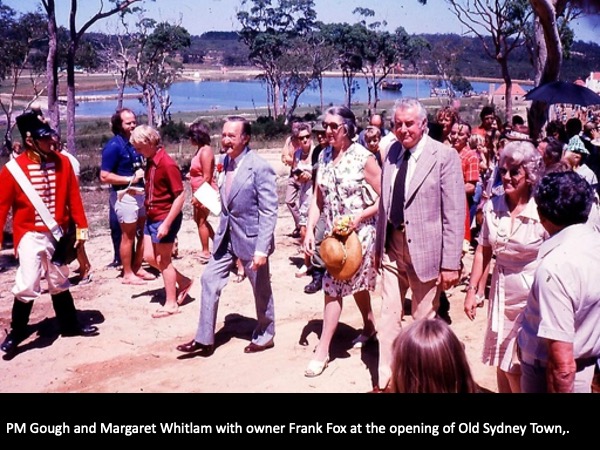
It created a dynamic outdoor theatre in the same way as the recreation of a 1850s gold mining village at Sovereign Hill, near Ballarat, still does. But the huge lacuna at OST, the missing piece, that brings us back to the current controversy with Australia Day, is the complete absence of the Indigenous.
There is no mention of the Aborigines who were killed in making of the original Sydney Town, a history so searingly portrayed in ‘The Secret River’, Kate Grenville’s astounding novel of 2005 that was made into a theatre production and a three-part TV series. It told the story of massacres of Aborigines by settlers in 1806. An Indigenous response came in 2020 in ‘Benevolence’, a book by Julie Janson.
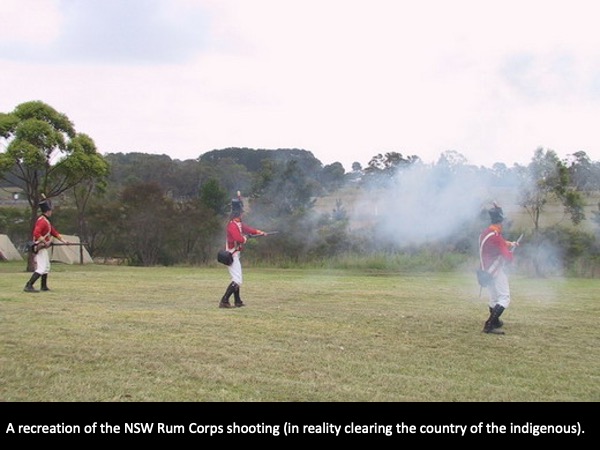
It is doubly damning that we needed a white author to tell black stories to know that Sydney, indeed Australia, was founded on violent killings of Indigenous peoples. That is the central issue in celebrating ‘Australia’ on a day that marks the beginning of white invasion, land grabs and massacres.
Like many tourist facilities that are unable to renew themselves, OST withered and in 2003, 200 years after the year it replicated, it closed. Perhaps we can think it was karmically on Australia Day. After that it was occasionally used as a film set and it gradually fell into disrepair and changed hands several times as there were attempts to revive it (along with the adjacent reptile park).
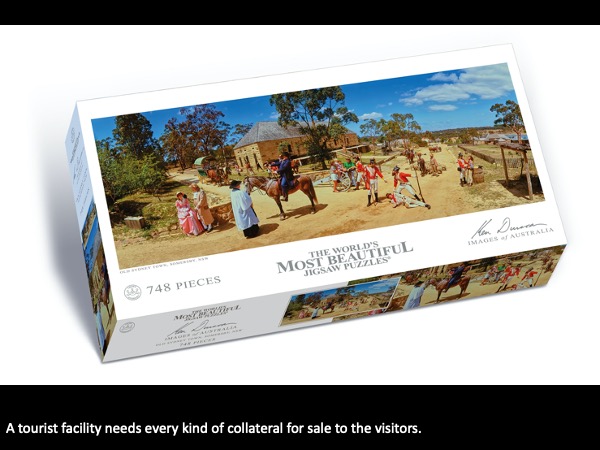
What to do with OST? Could it be a site for celebrating Australia Day again? Clearly not in its original imagining. Given its topography so closely resembles Sydney Cove I would suggest that one approach could be to replace OST with a recreation of the place BEFORE occupation. To have indigenous groups recreate the society, villages, buildings, crops, and animals pre-1788 (without the dreaded re-enactments).
OST was created from research that was of its time fifty years ago. Now that we have the likes of Bruce Pascoe’s, Bill Gammage’s and others’ research, shouldn’t we put that knowledge to the test? Is a manufactured scenario, a deliberately orchestrated tourist facility that shows off indigenous creativity, so far-fetched? It sounds patronising at first, but bear with me, I think it could work.
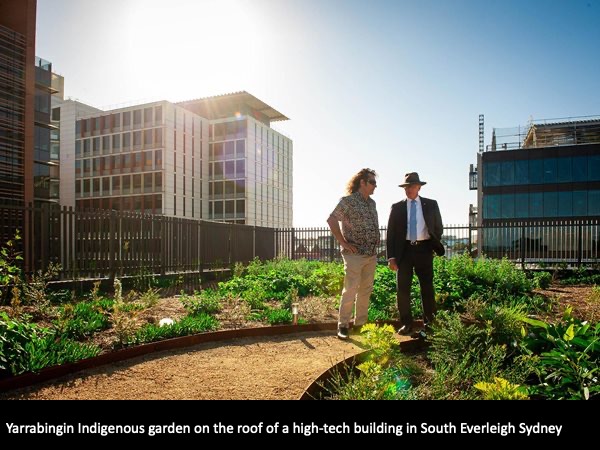
Yerrabingin, a native rooftop farm on the roof of a high-tech building in South Everleigh that is regularly presented by Clarence Slockee on the ABC’s Gardening Australia shows what’s possible. Indigenous tourist facilities throughout Australia are a gentle teaching resource.
The new bible for that tourist trail was written by the forceful Indigenous voice of Marcia Langton. ‘Welcome to Country: A Travel Guide to Indigenous Australia’, now in its second edition, the publication is a most important pointer to how to engage the redneck Aussie in an awareness and understanding of culture and country.
Wesley Enoch and Noel Pearson are right. We should retain Australia Day, but as a day to celebrate the first peoples, and what they have then and now. We can find other days for Anglo and multicultural celebrations.
Researched and written by Tone Wheeler. Views expressed solely those of the author, not held or endorsed by A+D. Comments may be addressed to [email protected].

